UPDATE: due to an overwhelming response, applications to test this pattern are now closed. Thank you to everyone who took the time to apply!
Amber of Virgil’s Fine Goods and I have been working on a particularly adorable and exciting new 18th century pattern collection to add to the Scroop + Virgil’s Fine Goods historical pattern collaboration – three 18th century cloak and mantle patterns which will be available individually, or as the ultimate awesome pattern bundle.
Our pattern is almost finished, but we want to check that it’s as fabulous as possible, so we need testers to help us check it out!
If you’d like to apply be one of them, keep reading to learn more!
Please note that we always get significantly more applicants than we have spots available, so we are not able to include everyone who applies in the testing pool.
The Patterns:
The Marie Mantle: 1740-1779, is an unlined short mantle with two body views and an optional small hood. The pattern includes instructions on self-fabric trim variations, as well as instructions on making it in lace or gauze in addition to standard fabrics like light-midweight silks.
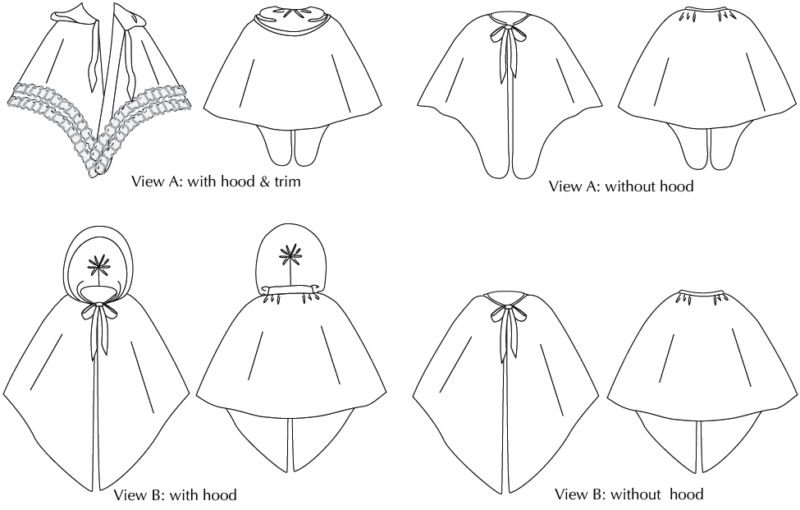
The Charlotte Mantle 1770-1795, is a lined or unlined mantle with two body views and an optional large hood. The pattern includes instructions on self-fabric trim variations.
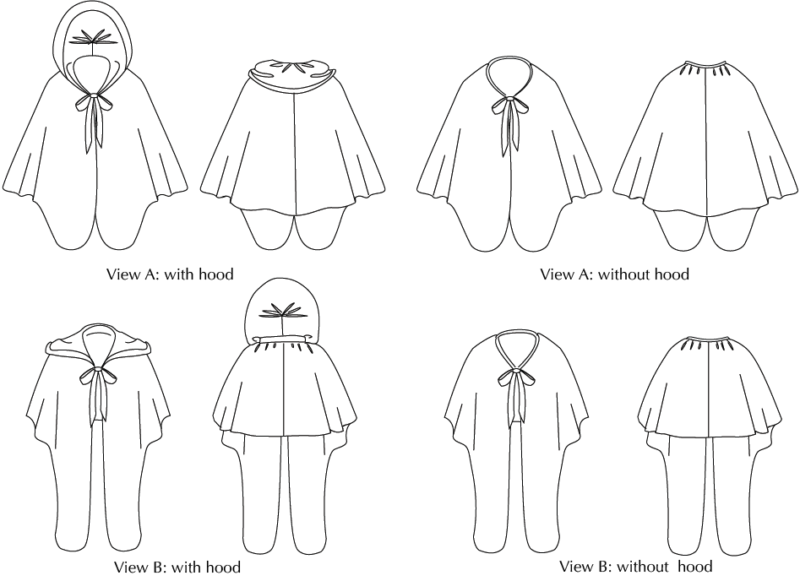
The Sophia Mantle: 1775-1810, is a fully lined mantle with two body options featuring squared off lappets that fall to mid-calf, an enormous high-fashion hood, and instructions on adding fur, marabou feather or handmade fringe trim.
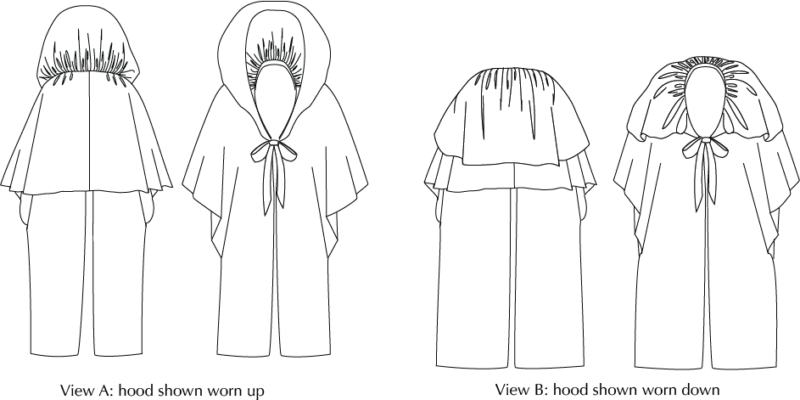
(and yes, this faaaaaabulous mantle is one of the primary inspirations for the Sophia)
Sizing:
All three patterns will be available in four sizes which cover the full Scroop + Virgil’s Size Range of 30”/76cm bust to 52”/115cm bust. Because mantle patterns are so adaptable, the patterns will easily fit larger and smaller sizes as well.

Testers:
These cloaks/mantles are easy/intermediate historical patterns. There is the option to learn some slightly trickier techniques based on the fabrics and trims you choose. Testers should be comfortable hand-sewing. You should have some experience working with the type of fabric you intend to test in.
To be a tester you will need to:
- Be able to print patterns in A4, A0, US Letter or US full sized Copyshop paper sizes
- Have the time to sew up the item. You’ll have 27 days to make a finished cloak/mantle, photograph it, and provide feedback. The view you are making, and the
- Be able to photograph your make being worn, and be willing for us to share your photos on this blog and instagram.
- Provide clear feedback
- Agree to a confidentially agreement regarding the pattern
We would hugely appreciate it if testers would share their finished make once the pattern launches, but this is not mandatory. We’re asking for TESTERS, not marketers.
As always we’re looking for a range of testers. We need a spread of geographical location, body type, sewing experience, and personal style.
The Timeline:
Materials:
If you’re selected to test we’ll let you know and send you the materials requirements, line drawings, and the full pattern description before 10 pm NZ time on Thursday the 27th of October. This is Wed the 26th for most of the rest of the world.
Patterns:
We will send out a digital copy of the pattern to testers before 10pm NZ time on Thursday the 3rd of November.
Testing & Reviewing:
Testing will go for three and a half weeks. .
Testers will have until 10pm NZ time on Mon the 28th of November to provide feedback and images of their mantle
What you get:
Pattern testers will get a digital copy of the full bundle pattern which includes all three cloak patterns and instructions, lots of thanks, and features on my blog and our IGs.
Testing also offers testers an opportunity to get group and 1-1 feedback, assistance, and sewing tutorials from Amber and I – similarly to what you’d get in an online sewing workshop. We’re modelling our testing process after an online class, albeit one you don’t pay for, because you’re letting us beta test the pattern on you. There’s an online group that testers can join as they wish. We’ll also be running a couple of live zoom events. We’re committed to making testing as beneficial to testers as it is to us, and improve our testing process with every pattern we do.
Hope to hear from you!
To Apply:
Follow this link and fill out the form!
And to get your creative juices flowing, enjoy some of the inspirations behind the patterns!
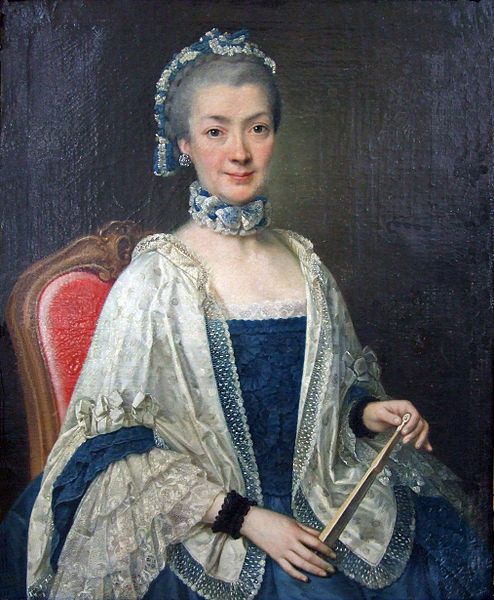
Portrait of an Unknown Lady, c. 1764, by Joachim Martin Falbe (German, 1709-1782)
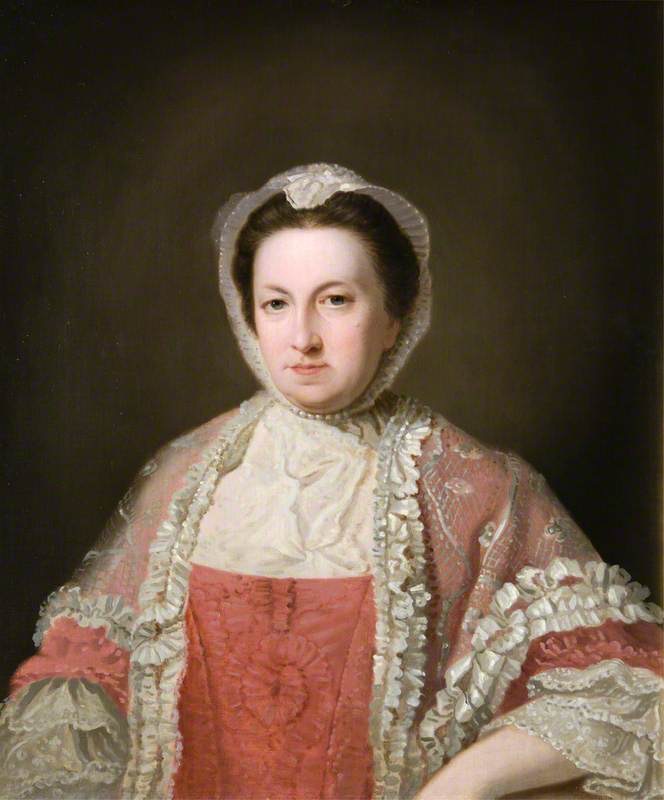
Lady Frances Erskine (1716–1776, by David Allan, ca. 1764, (c) Aberdeen Art Gallery & Museums; Supplied by The Public Catalogue Foundation
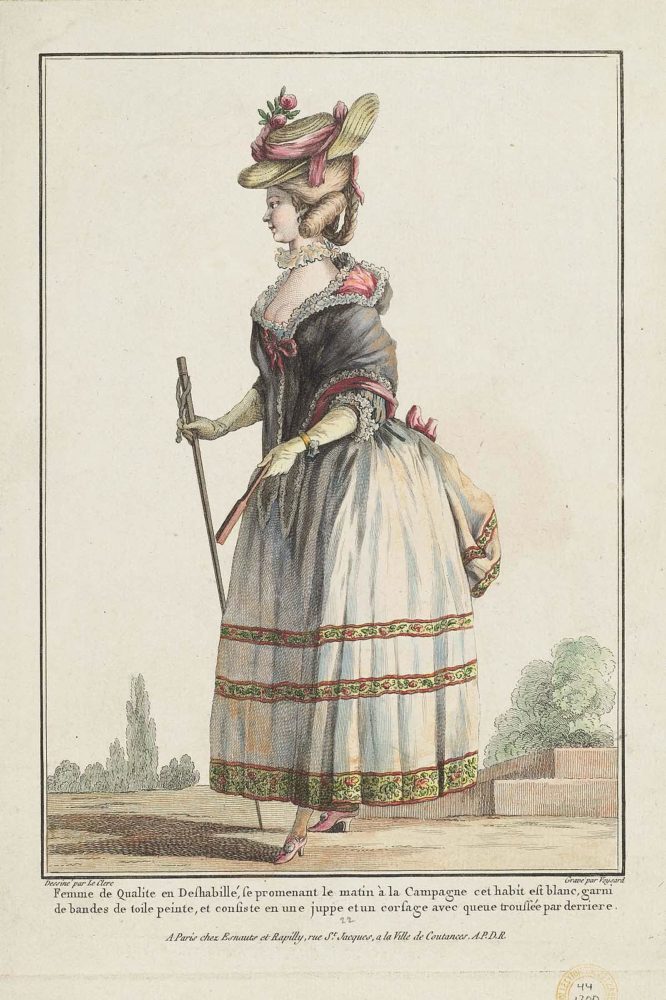
Gallerie des Modes et Costumes Français. 7e. Pierre-Thomas LeClerc, Engraver Etienne Claude Voysard, Publisher Esnauts et Rapilly 1778
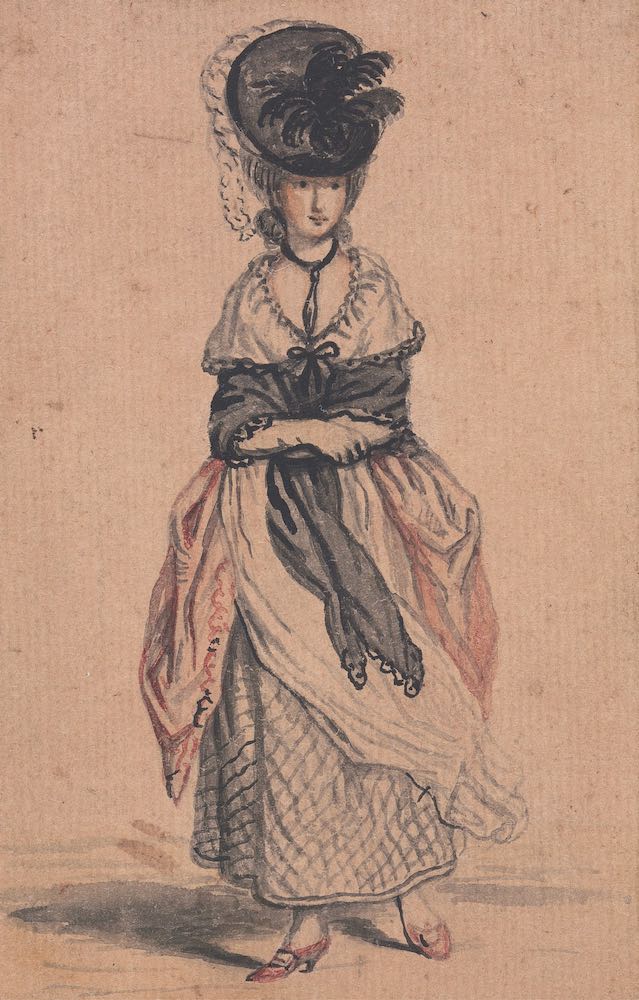
John Collet, ca. 1725–1780, British, A Lady of Fashion, ca. 1778, Pen, black ink and watercolor, Yale Center for British Art, Paul Mellon Collection, B1977.14.4966
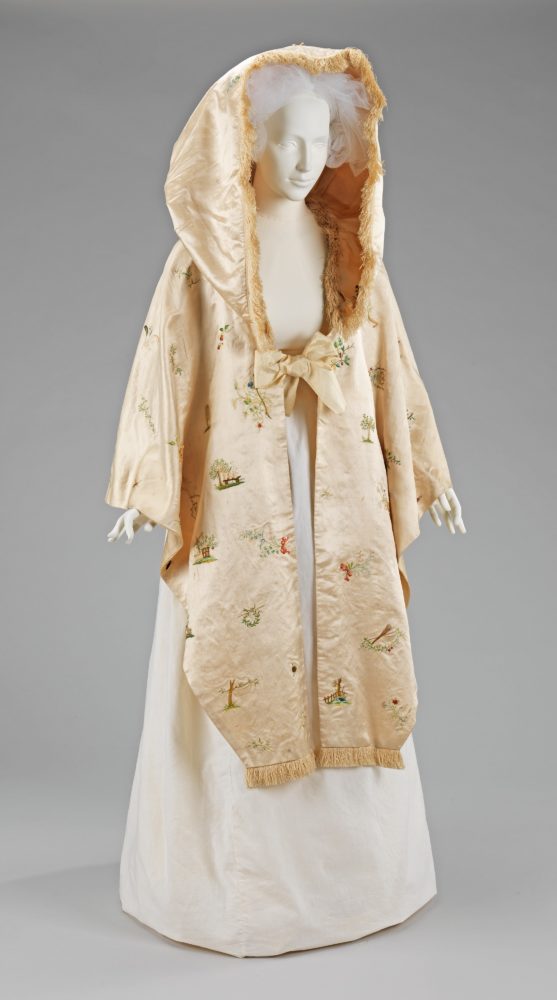
Cape, 1795–1800, British, silk, Brooklyn Museum Costume Collection at The Metropolitan Museum of Art; 2009.300.3890

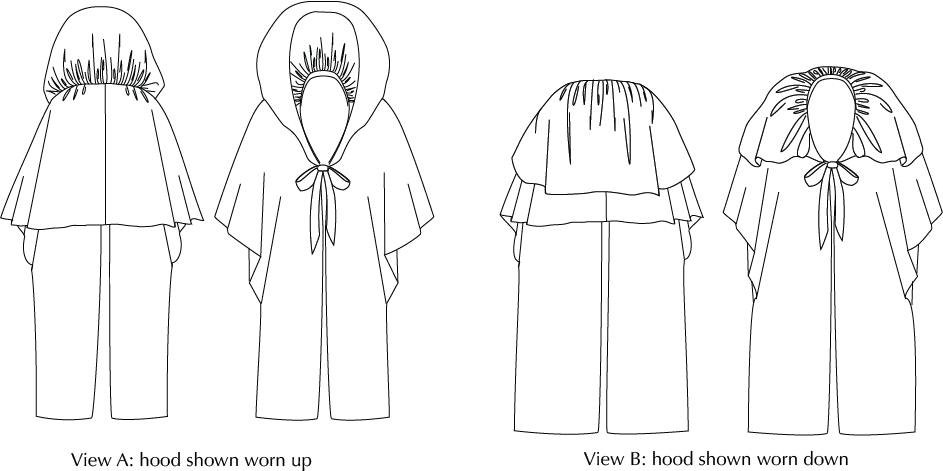
Now that’s a *lot* of variations, and they all look lovely! I really look forward to seeing the testers’ makes.
Yeah, it started out as one pattern and it quickly became obvious it was too big for that!
Ooh! The historical sewing community has long needed a variety of cloaks to fit different periods. These will be popular!
In addition, if you’re in a chilly part of the world, one of the longer ones, hood and all, could be just what you need to be toastier this winter…indoors as well as out.
Congratulations on another design!
It’s interesting to me, because the front parts remind me a bit of the front parts of “the capelet of yay”, as you dubbed it. They also seem to be to be very ready to do cross in front of each other as you see in many portraits.
Ooh!
One of my convict ancestors was wearing a red cape when she committed her crime in London in the early 1800s. I wonder if it was anything like the Sophia?!
(She stole a linen sheet from an exceptionally gullible woman and was caught in Shoe Lane by a busybody neighbour. Convicted in the Old Bailey and deported to Australia, where she founded my paternal grandmother’s family, which includes novelist Miles Franklin!)
Oh my goodness! What a fascinating story! It was actually probably more like the Marie View A – cloaks like that were worn by poorer women well into the 19th century – we’ve just covered the fashionable range for the cloak in our date range.
*quickly scrolls up to see the Marie again*
Thankyou! I imagined something long and billowing but this makes more sense for a young woman reduced to stealing.
I’ve wondered about the colour, too. I’ve read conflicting information about red being common/uncommon in clothing for poor people at this time.
I’d love to know what you think!
britishmuseum.orgBased on images and mentions from the time, red was a VERY common colour for cloaks for poor women. Practically ubiquitous in fact. See images like this one, where the red cloak is an instant sign that a woman is working class:
https://www.britishmuseum.org/collection/object/P_2010-7081-1213
Thanks so much for this!
It’s good to know Susannah was a working class girl, not a toff fallen on hard times!
You’re most welcome! If she’d been wearing a silk mantle she might have been either, as there was a thriving second-hand goods market, but a red wool cloak strongly suggests working class.
I just realized: One advantage of mantles and cloaks is you don’t have to fight with the sleeves of your dress not fitting into the sleeve of your jacket or sweater!
I want to do the Sophia, but with a fabulous fake fur lining, like the sable-lined cloaks the Russian nobility wore.
Oh, exciting! I’ve been wanting to make a cloak for myself as an everyday alternative to a sweater, and one of these patterns may be just the right starting point.
Oh I want to test! And my name is Charlotte too…alas, saw the post too late. I will have to wait for the release! The pattern looks amazing 🙂